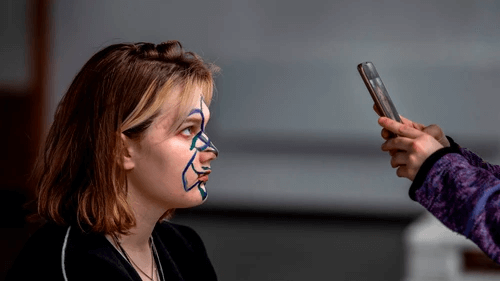Can cosmetics fool facial recognition technology?

A new study from Ben-Gurion University of the Negev finds computationally-generated makeup patterns that can bypass facial recognition software. Digitally and physically applied makeup can fool some facial recognition systems with a 98 percent success rate.
It is understood that in the experiment, the researchers blacklisted 20 volunteers to facilitate the system to mark their identities. The researchers then used YouCam Makeup’s selfie app to digitally image the face based on a heatmap of recognizable areas of the face. The makeup artist then used makeup to simulate digital makeup on the volunteers to test the response of the target model in real situations.

It is reported that the researchers tested the technology in a simulated real-world scenario. Volunteers walk through a hallway equipped with two cameras, at which point the assessment system recognizes.
PhD student Nizan Gaitan, lead author of the study, said: “I was amazed by the results of this study, where the makeup artist simply copied the pattern in the image onto the face. This copying is not precise, But it still works.”
It is worth mentioning that the paper concludes: “This technique achieved 100% success in numerical experiments on both the FaceNet model and the LResNet model. In the physical experiments, 47.6% of the participants did not wear makeup, 33.7% of participants did not wear makeup. People using this method were identified in only 1.2% of the frames.”
In addition, the paper also mentions: “If we are in a black-box scene, then we have no access to the target FR model, its architecture and any parameters, so the attacker’s option is to change his/her face before being captured by the camera. “
Interestingly, the researchers aren’t the first to trick facial recognition systems with makeup.
Back in 2010, artist Adam Harvey’s CV Dazzle project featured a series of makeup looks designed to thwart algorithms, inspired by the “dazzling” camouflage used by naval ships in World War I.
There is also a lot of research into bypassing facial recognition systems through digital simulations, such as by creating “master faces” that mimic others. The paper cites a piece that says that a printable sticker on a hat can bypass facial recognition systems, and another study prints eyeglass frames.
While these methods may hide someone from facial recognition algorithms, they have the side effect of making you stand out in a crowd, such as when you’re trying to get to an airport.
“I don’t usually believe in facial recognition technology today, and there are a lot of problems with facial recognition. But I think the technology is getting better and better,” said the person.
The Links: 3BSE000435R1 3BSC950107R1
Next: Robots are starting to deliver parcel...




